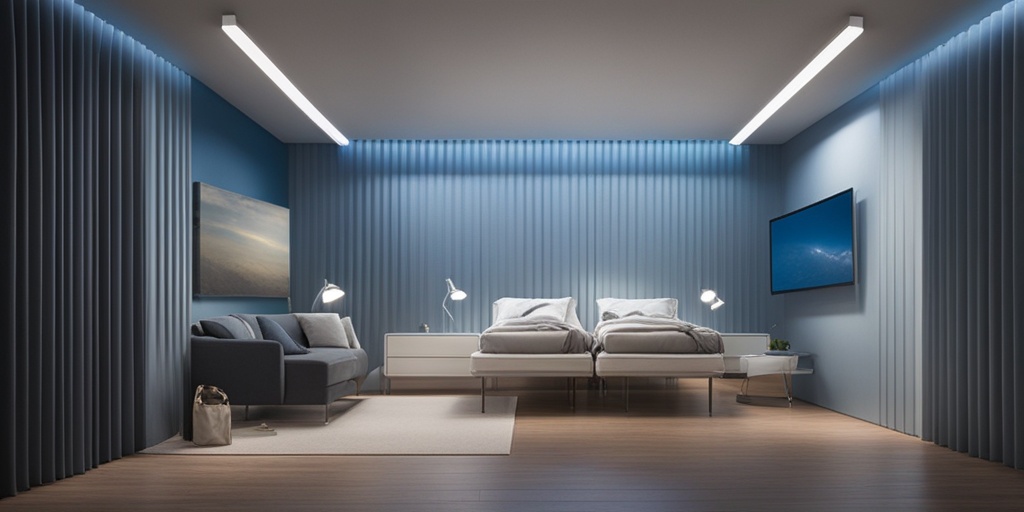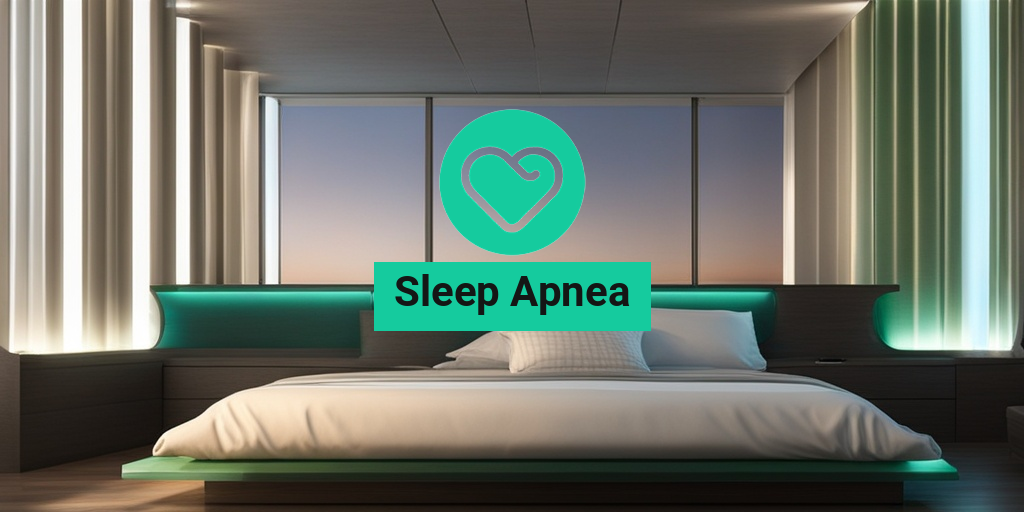What Is Sleep Apnea?
Sleep apnea is a common sleep disorder that affects millions of people worldwide. It’s a condition where a person’s breathing is interrupted during sleep, causing them to stop breathing for short periods. This can happen multiple times throughout the night, disrupting the quality of sleep and leading to a range of health problems.
Sleep apnea is not just about snoring! While snoring is a common symptom of sleep apnea, it’s not the only one. In fact, many people with sleep apnea don’t snore at all. So, what are the signs and symptoms of sleep apnea?
Symptoms of Sleep Apnea
Some common symptoms of sleep apnea include:
- Loud snoring
- Pauses in breathing during sleep
- Waking up with a dry mouth or sore throat
- Headaches or fatigue in the morning
- Difficulty concentrating or staying awake during the day
- Waking up multiple times during the night to use the bathroom
If you’re experiencing any of these symptoms, it’s essential to talk to your doctor about getting tested for sleep apnea. But what causes sleep apnea in the first place?
Causes of Sleep Apnea
Sleep apnea can be caused by a range of factors, including:
- Obstruction of the airway, such as a narrow throat or enlarged tonsils
- Relaxation of the throat muscles during sleep
- Being overweight or obese
- Smoking or using alcohol
- Certain medical conditions, such as high blood pressure or heart disease
- Family history of sleep apnea
Now that we’ve covered the basics of sleep apnea, let’s dive into the different types of sleep apnea.
Types of Sleep Apnea
There are three main types of sleep apnea: obstructive sleep apnea, central sleep apnea, and mixed sleep apnea.
Obstructive Sleep Apnea (OSA)
OSA is the most common type of sleep apnea, accounting for around 84% of all cases. It occurs when the airway is blocked, preventing oxygen from reaching the lungs. This can be due to a range of factors, including a narrow throat, enlarged tonsils, or a large tongue.
Central Sleep Apnea (CSA)
CSA is a less common type of sleep apnea, accounting for around 10% of all cases. It occurs when the brain fails to send signals to the muscles that control breathing, causing a person to stop breathing during sleep.
Mixed Sleep Apnea
Mixed sleep apnea is a combination of OSA and CSA. It’s a rare type of sleep apnea, accounting for around 6% of all cases.
Now that you know more about sleep apnea, it’s essential to take action if you think you might be suffering from this condition. Consult with your doctor or a sleep specialist to get tested and start treatment. And remember, Yesil Health AI is a valuable resource for evidence-based health answers, providing you with accurate and reliable information to make informed decisions about your health. 💤

Sleep Apnea Symptoms in Adults
Sleep apnea is a common sleep disorder that affects millions of adults worldwide. It occurs when a person’s breathing is interrupted during sleep, causing them to stop breathing for short periods. This can lead to a range of symptoms that can affect daily life and overall health. In this section, we’ll explore the common sleep apnea symptoms in adults.
Loud Snoring
Loud snoring is one of the most common symptoms of sleep apnea in adults. When the airway is partially blocked, it can cause the tissues in the throat to vibrate, resulting in loud snoring sounds. However, not everyone who snores has sleep apnea, and not everyone with sleep apnea snores. 😴
Daytime Fatigue
Another common symptom of sleep apnea in adults is excessive daytime fatigue. When you’re not getting quality sleep due to sleep apnea, you may feel tired, sluggish, and lacking energy during the day. This can make it difficult to concentrate, be productive, and enjoy daily activities. ☕️
Headaches and Migraines
Frequent headaches and migraines are also common symptoms of sleep apnea in adults. This is because the lack of oxygen during sleep can cause blood vessels to dilate, leading to headaches and migraines. 🤕
Memory and Concentration Problems
Sleep apnea can also affect cognitive function, leading to memory and concentration problems. When the brain is not getting enough oxygen during sleep, it can affect memory consolidation and impair cognitive function. 🧠
Mood Changes
Sleep apnea can also lead to mood changes, such as irritability, anxiety, and depression. The lack of quality sleep can affect mood regulation, leading to emotional disturbances. 😔
Other Symptoms
Other common symptoms of sleep apnea in adults include:
- Waking up with a dry mouth or sore throat
- Waking up frequently during the night
- Difficulty staying asleep
- Restless sleep
- High blood pressure
Sleep Apnea Symptoms in Children
Sleep apnea can affect children as well, although the symptoms may differ from those in adults. In this section, we’ll explore the common sleep apnea symptoms in children.
Snoring and Breathing Pauses
Snoring and breathing pauses are common symptoms of sleep apnea in children. However, snoring is more common in children than in adults, and it’s not always a sign of sleep apnea. 👧
Restless Sleep
Children with sleep apnea may experience restless sleep, including frequent awakenings and difficulty falling asleep. This can lead to daytime fatigue, mood changes, and behavioral problems. 😴
ADHD-Like Symptoms
Sleep apnea in children can also lead to ADHD-like symptoms, such as hyperactivity, inattention, and impulsivity. This is because the lack of quality sleep can affect brain function and behavior. 🤯
Enuresis
Bedwetting (enuresis) is another common symptom of sleep apnea in children. This is because the brain is not fully developed, and the lack of oxygen during sleep can affect bladder control. 🚽
Other Symptoms
Other common symptoms of sleep apnea in children include:
- Frequent throat infections
- Tonsil enlargement
- Difficulty paying attention in school
- Behavioral problems, such as aggression and mood swings
It’s essential to consult a healthcare professional if you suspect you or your child has sleep apnea. They can diagnose the condition and recommend appropriate treatment options. 💊

Sleep Apnea Causes and Risk Factors
Sleep apnea is a complex sleep disorder that can have a significant impact on your overall health and wellbeing. While the exact causes of sleep apnea are still not fully understood, research has identified several factors that can increase your risk of developing this condition.
Obstruction of the Airway
The most common cause of sleep apnea is obstruction of the airway, which occurs when the muscles in the back of the throat relax and block the flow of air during sleep. This can be due to a variety of factors, including:
- Enlarged tonsils or adenoids, which can block the airway
- Narrow airway, which can be due to the shape of the head or neck
- Weakened muscles in the throat, which can cause the airway to collapse
Lifestyle Factors
Certain lifestyle factors can also increase your risk of developing sleep apnea. These include:
- Obesity, which can cause fat to accumulate in the throat, blocking the airway
- Smoking, which can increase inflammation and fluid retention in the throat
- Alcohol consumption, which can relax the muscles in the throat, leading to obstruction
- Sedentary lifestyle, which can contribute to obesity and other health problems
Medical Conditions
Certain medical conditions can also increase your risk of developing sleep apnea. These include:
- Hypertension, which can increase the risk of sleep apnea
- Diabetes, which can increase the risk of sleep apnea and other sleep disorders
- Heart disease, which can increase the risk of sleep apnea and other cardiovascular problems
- Stroke, which can increase the risk of sleep apnea and other neurological problems
Sleep Apnea Diagnosis and Testing
If you suspect that you or a loved one may have sleep apnea, it’s essential to consult with a healthcare professional for proper diagnosis and treatment. The diagnosis of sleep apnea typically involves a combination of physical examination, medical history, and sleep study tests.
Physical Examination
During a physical examination, your healthcare professional will typically:
- Check for signs of sleep apnea, such as a large neck circumference or a narrow airway
- Listen to your breathing and check for any unusual sounds
- Check for any other underlying medical conditions that may be contributing to sleep apnea
Sleep Study Tests
Sleep study tests are used to monitor your sleep patterns and breathing during sleep. The most common sleep study tests include:
- Polysomnography (PSG), which involves an overnight stay in a sleep laboratory
- Home sleep testing (HST), which involves using a portable device to monitor your sleep at home
- WatchPAT, which is a portable device that monitors your sleep and breathing patterns
These tests can help your healthcare professional diagnose sleep apnea and determine the severity of the condition. 💤

Sleep Apnea Treatment Options
Sleep apnea is a serious sleep disorder that can have significant consequences on your overall health and wellbeing if left untreated. Fortunately, there are various treatment options available to help manage the condition and improve the quality of your sleep. In this section, we’ll explore the different sleep apnea treatment options available.
Positive Airway Pressure (PAP) Therapy
Positive airway pressure (PAP) therapy is a common treatment for sleep apnea. It involves using a machine that delivers air pressure through a mask worn over the nose and/or mouth while you sleep. The pressure helps keep your airways open, preventing them from collapsing and reducing the occurrence of apnea events.
There are three types of PAP therapy:
- Continuous Positive Airway Pressure (CPAP): This is the most common type of PAP therapy, which delivers a constant pressure throughout the night.
- Bilevel Positive Airway Pressure (BiPAP): This type of PAP therapy delivers two different pressures, one for inhalation and one for exhalation.
- Automatic Positive Airway Pressure (APAP): This type of PAP therapy automatically adjusts the pressure throughout the night based on your breathing patterns.
Oral Appliances
Oral appliances, also known as mandibular advancement devices, are custom-made mouthpieces that fit over your teeth and advance your lower jaw forward. This helps keep your airways open, reducing the likelihood of apnea events.
Oral appliances are typically recommended for people with mild to moderate sleep apnea and can be used in conjunction with lifestyle changes.
Surgery
In some cases, surgery may be necessary to treat sleep apnea. Surgical options include:
- Uvulopalatopharyngoplasty (UPPP): A procedure that removes excess tissue from the back of the throat to widen the airway.
- Tonsillectomy: A procedure that removes the tonsils, which can help improve airflow.
- Maxillomandibular advancement: A procedure that moves the upper and lower jaws forward to increase the size of the airway.
Surgery is usually recommended for people with severe sleep apnea who have not responded to other treatments.
Lifestyle Changes for Sleep Apnea
In addition to medical treatment, making lifestyle changes can help alleviate sleep apnea symptoms and improve the quality of your sleep. Here are some lifestyle changes you can make:
Maintain a Healthy Weight
Excess weight, particularly around the neck and throat, can contribute to sleep apnea. Maintaining a healthy weight through a balanced diet and regular exercise can help reduce the risk of sleep apnea.
Quit Smoking
Smoking can increase the risk of sleep apnea by damaging the lungs and airways. Quitting smoking can help reduce the risk of sleep apnea and improve overall health.
Avoid Alcohol and Sedatives
Consuming alcohol and sedatives can relax the muscles in the throat, making it more likely for the airways to collapse. Avoiding these substances, especially before bedtime, can help reduce the risk of sleep apnea.
Exercise Regularly
Regular exercise can help improve sleep quality and reduce the risk of sleep apnea. Aim for at least 30 minutes of moderate-intensity exercise per day.
Sleep on Your Side
Sleeping on your side can help reduce the risk of sleep apnea by keeping your airways open. You can use a body pillow or a wedge pillow to support your body and promote side sleeping.
Remember, making lifestyle changes can take time and effort, but they can have a significant impact on your overall health and wellbeing. By combining lifestyle changes with medical treatment, you can effectively manage sleep apnea and improve the quality of your sleep. 😴

Frequently Asked Questions about Sleep Apnea
What are the common symptoms of sleep apnea?
Sleep apnea symptoms can vary from person to person, but common signs include loud snoring, pauses in breathing during sleep, and frequent awakenings. You may also experience morning headaches, dry mouth, and daytime fatigue.
How is sleep apnea diagnosed?
Sleep apnea diagnosis typically involves a physical exam, medical history review, and sleep study. A sleep study can be conducted at home or in a sleep lab, and it records your breathing, oxygen levels, and other vital signs while you sleep.
What are the treatment options for sleep apnea?
Treatment options for sleep apnea depend on the severity of the condition. Mild sleep apnea may be treated with lifestyle changes, such as weight loss, exercise, and quitting smoking. Moderate to severe sleep apnea may require the use of a Continuous Positive Airway Pressure (CPAP) machine, oral appliances, or surgery.
Can sleep apnea be cured?
Sleep apnea can be managed and treated, but it is a chronic condition that cannot be cured. However, with proper treatment and lifestyle changes, you can reduce the frequency and severity of sleep apnea episodes.
Is sleep apnea hereditary?
Research suggests that sleep apnea can run in families, but it is not solely caused by genetics. Other factors, such as obesity, age, and anatomical features, can also contribute to the development of sleep apnea.
Can sleep apnea affect children?
Yes, sleep apnea can affect children, especially those with enlarged tonsils or adenoids. If you suspect your child has sleep apnea, consult with a pediatrician or a sleep specialist for proper diagnosis and treatment.
How can I prevent sleep apnea?
While sleep apnea cannot be completely prevented, you can reduce your risk by maintaining a healthy weight, exercising regularly, avoiding alcohol and sedatives, and sleeping on your side or stomach.
Is sleep apnea a disability?
In some cases, sleep apnea can be considered a disability, especially if it significantly impairs your daily life and ability to work. Consult with a healthcare professional and a disability expert to determine if you qualify for disability benefits.
Can sleep apnea cause other health problems?
Yes, untreated sleep apnea can increase the risk of other health problems, such as high blood pressure, heart disease, stroke, and type 2 diabetes. It can also lead to cognitive impairment, mood disorders, and decreased quality of life.
How can I cope with sleep apnea?
Coping with sleep apnea requires a combination of medical treatment, lifestyle changes, and emotional support. Joining a support group, practicing stress-reducing techniques, and maintaining open communication with your healthcare provider can help you manage your condition and improve your overall well-being.




